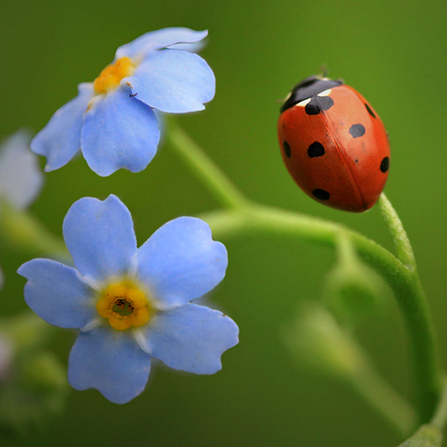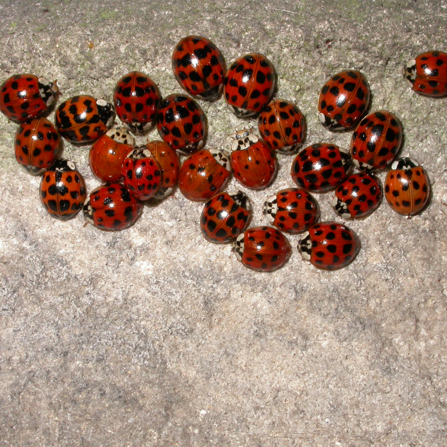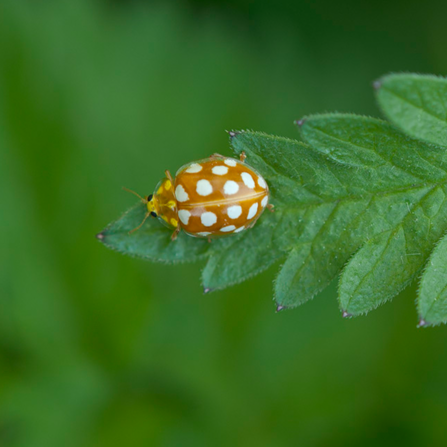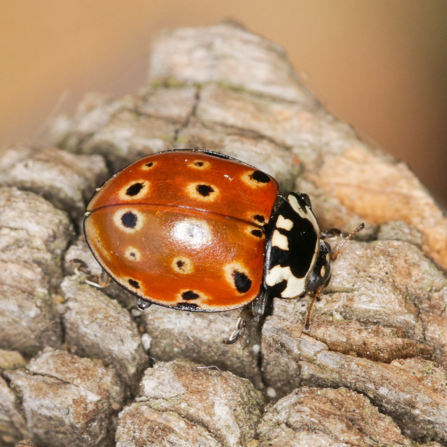Coming in different shapes and sizes, perhaps the most recognisable and most popular beetle is the ladybird. Known as the gardener’s friend, the ladybird helps stop our prized plants being consumed by feeding on aphids.
The classic image of the ladybird is the aptly named 7-spot ladybird, donning seven spots dotted across its bright red back. However, there are around 47 species of ladybird in the UK all with a varying patterns and colours.
Of the 47 or so ladybirds that live in the UK, only around 26 are considered ‘conspicuous ladybirds’. These are the large, colourful ladybirds that can often be spotted on plants. The other species are smaller, harder to find and harder to identify.
Here are four conspicuous ladybirds to look out for!





